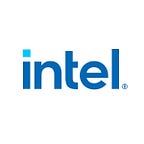Healthcare Technology
AI in the Age of the Smart Hospital
Author: Alex Flores, Director, Health Solutions Vertical, Health and Life Sciences Organization, Intel Corporation
While talking about Artificial Intelligence (AI) in healthcare might sound futuristic, the first proof of concept for AI application took place in the late 1950s1. In the 1970s, researchers at Stanford developed the MYCIN program to help doctors identify blood infections.2 At Intel, we’ve had the opportunity to see many different types of AI applications in use by our partners in the healthcare industry, from AI-enabled robots that can help clean hospital rooms to algorithms that can perform real-time inference on endoscopic cameras.
Many of these AI implementations rely on edge computing, or the ability to process and compute data close to where it originates — either on a network-connected device or right next to the device. AI at the edge means that data can be processed and analyzed quickly — before it goes to the cloud or a server for storage. As you would imagine, this capability drastically decreases latency while increasing the amount of data processing that can be done. When you combine optimized edge computing solutions with innovations from our healthcare partners, the results are amazing.
Medical Imaging and AI
Imagine giving radiologists the ability to screen more patients — while helping them identify patients that need urgent care. Intel AI technologies used in medical imaging devices like ultrasound, CT, MRI and X-ray help improve the workflow of radiologists by aiding them in triaging patient scans.
AI’s use in medical imaging is not new. Medical device equipment makers have been using AI technology to assist analysis of CT and MRI scans for years. However, the COVID-19 pandemic brought about a willingness to take more risks, try new things, and a need to move faster. In the early days of the pandemic, we saw healthcare professionals try anything to understand, diagnose, and battle COVID. Medical professionals were now using different medical imaging equipment and techniques — like X-Rays, CTs, and even ultrasound — to help them detect and diagnose COVID well before test kits were readily available. Today, healthcare professionals are more willing to use AI in medical imaging technology and applications than ever before.
Meeting Future Challenges
As the COVID-19 pandemic continues, hospitals (like many other large institutions) are demanding more and more of their IT department while stretching IT budgets for maximum efficiency. At the same time, the demand for remote access to computing systems has never been greater. At Intel, we are continuing to support the healthcare and life sciences industries by offering a range of platforms that offer flexible compute configurations and long-life capabilities to meet a wide range of needs.
Intel’s comprehensive ecosystem offers flexible deployment solutions. For example, the integrated graphics processing within Intel CPUs, combined with optimized software like the Intel® Distribution of OpenVINO™ Toolkit, can significantly increase the throughput without impacting the device footprint. The toolkit optimizes imaging workloads to run on existing CPU architectures, eliminating the need for a discrete graphics card and helping device manufacturers meet thermal and acoustic constraints.
Helping Patients — And Clinicians
Undergoing a CT scan is not the most pleasant experience for most people, including myself. The thought of being encased in a clicking, buzzing tube for more than an hour fills me with dread. Now imagine there was an error in obtaining the image and the procedure must be repeated. AI technologies can help healthcare professionals ensure the patient is situated correctly before beginning the scan, avoiding the need to re-scan the patient and expose them to more radiation.
Another example involves the use of ultrasound-guided regional anesthesia (UGRA). This technique is becoming more popular because of the availability of high-resolution ultrasound machines. During a UGRA procedure, AI-based solutions can help practitioners quickly locate nerves using an ultrasound scan — a huge benefit to those of us who are needle-phobic.
For radiologists and other medical professionals that must review hundreds of images a day, another challenge is “noise,” or the blurriness on an image that can leave parts of it unclear. AI-enhanced image processing tools can “de-noise” images to improve their quality.
Conclusion
At Intel, we are continually working to improve patient care. Together with our partners, we are developing technology that helps practitioners identify potential health problems earlier and reducing the amount of imaging and radiation required in future screenings, ultimately benefiting the patient.
Learn more about the advances our partners are delivering in AI-enabled medical imaging:
Solution Brief: Samsung Collaborates with Intel to Speed Nerve Detection and Improve Workflow
Solution Brief: Intel + GE Healthcare Optimize Deep Learning Performance for Healthcare Imaging
Please feel free to reach out to me via LinkedIn to discuss further. Happy to speak with fellow innovators in the HLS segment about improving patient outcomes.
Thank you ~Alex
Notices and Disclaimers:
1 https://sitn.hms.harvard.edu/flash/2017/history-artificial-intelligence/
2 https://www.britannica.com/technology/MYCIN
Intel technologies may require enabled hardware, software or service activation. No product or component can be absolutely secure. Your costs and results may vary.© Intel Corporation. Intel, the Intel logo, and other Intel marks are trademarks of Intel Corporation or its subsidiaries. Other names and brands may be claimed as the property of others.
